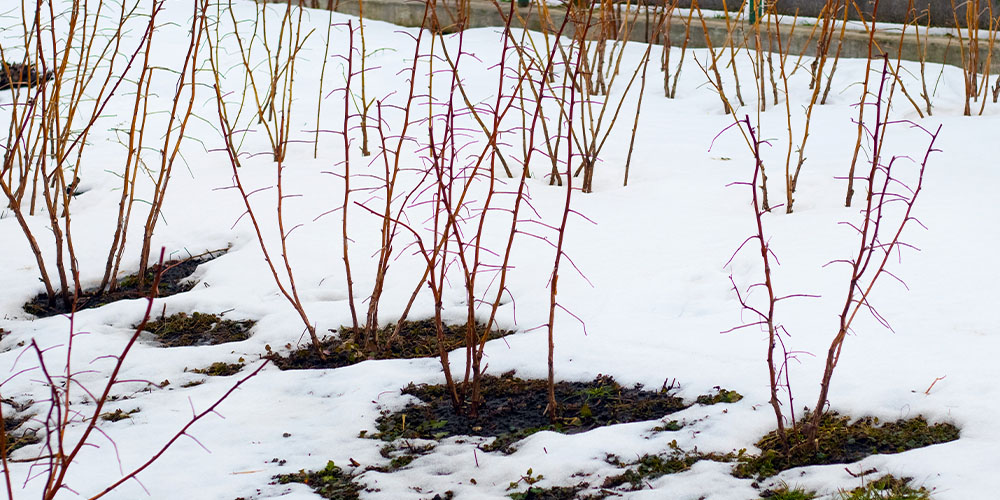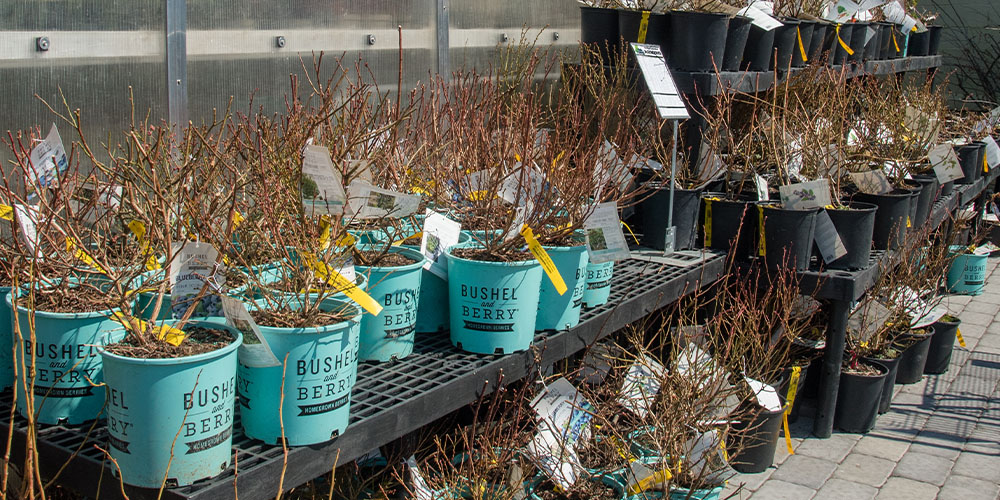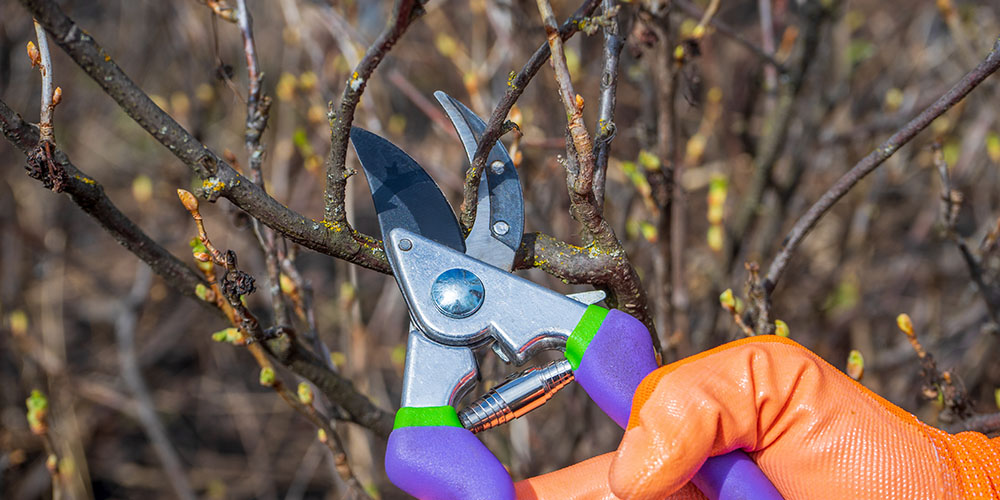Pruning for Production: How and When to Prune Fruit Trees and Berries
March 20, 2023
Late-winter pruning is essential to keep fruit and berries trees healthy, small, and well-shaped for fruit production.
Pruning fruit trees in winter has many benefits, from improving health to enhancing yields. This essential task is easy for anyone to master, but there are a few crucial steps and techniques to get it right. This how-to guide lets you turn fruit trees and berries from a scraggly mess into well-shaped, healthy, and productive plants!
Why Should I Prune Fruit Trees and Berries?
Fruit trees, left to their own design, don’t necessarily focus their energy on fruit. They grow too large and dense for us to harvest and form shapes that aren’t ideal for fruit production. Pruning helps keep them manageable, reduces the likelihood of disease, and creates a better shape for fruit production. Likewise, berry shrubs need pruning to keep the plants healthy and productive year after year.
What is the Best Time to Prune Fruit Trees in Pennsylvania?
Winter or early spring is ideal for pruning fruit and berries. With no leaves, we can see the branches’ shape, making pruning much easier. Plus, when we prune now, we direct the subsequent spring growth into the ideal shape for fruiting. Whereas, if you prune in summer, you reduce your trees’ growth or productivity, although some exceptions apply to berries, as you’ll see below.
Step #1 of How to Prune a Fruit Tree: Clean Up
Unless you’re dealing with tropical fruit, most fruit trees around Philadelphia can be pruned successfully with three steps:
The first thing to cut away is the damaged, diseased, and dead branches, also known as the three D’s. You should also clean out any suckers coming from the base of the tree and water sprouts. Like suckers, water sprouts are perfectly vertical, thin branches that rise from old branches. Although not harmful to a tree, they are unsightly, weak, unproductive, and don’t create the shape we want.
Step #2 of How to Prune a Fruit Tree: Thin Your Tree
Once the clean-up is complete, you can move towards thinning your tree. The goal is to create a canopy of evenly spaced branches with lots of access to light and air circulation, boosting fruit production.
Begin by removing any branches growing downward, towards the tree’s center, or crisscrossing other branches. Then look for any branches competing for space or light and thin the weakest looking of the pair.
An ideal shape should have branches angled at 10 o’clock or 2 o’clock to the center of the tree. Thin any overly narrow or excessively wide-angled branches, as they will usually be weaker and less productive. Aim to have about 6 – 12 inches of air space around your branches.
In steps 1 and 2, ensure your cuts are almost flush with the tree branch. Cutting just outside of the bark collar allows the cut to heal without leaving stubby branches sticking out.
Step #3 of How to Prune a Fruit Tree: Cut Back
The final step is to cut back the branches at the ends to encourage a shorter tree and lower height, which is easier for harvesting and better for fruit production. To do this, cut away 20-30% of last year’s growth, which is the smoothest end of each branch. Look for the growth nodes below your cut, where a new branch will emerge. If you want the branch to go to the right, cut above a right-facing node, and vice versa.
Other Tips On How to Prune Fruit Trees
- Use sterilized, sharp pruners to avoid the spread of disease.
- Sterilize pruners before moving on to a different tree.
- Don’t remove more than 1/3 of the total growth when pruning.
How to Prune Berry Bushes and Canes in Pennsylvania
Not all berry plants follow the same pruning requirements. Some need to be pruned after fruiting, while others can be pruned in the late winter or early spring. Pruning requirements also differ depending on the age of the branch they form berries on. For example, summer-bearing raspberries yield berries on 2-year-old canes. Below are a few pruning steps for popular berry plants around Glenside, PA.
How to Prune Blueberries
In late winter, prune away the three D’s (dead, diseased, and damaged) and any weak old stems that no longer have strong wood. Afterwards, begin thinning to create a vase-shaped bush with room for airflow and light. The best blueberries form on 2-4-year-old wood, so focus your pruning on the oldest stems. Cut old stems away at the ground, and remove any crisscrossing, overly crowded, or competing branches in the upper canopy.
How to Prune Summer-Bearing Raspberries
Summer-bearing raspberries produce one large harvest lasting 4-6 weeks sometime during the summer. They form berries on 2-year-old canes, or in other words, on the growth that was new during the previous season. To maximize yields, prune away any canes already two years or older, keeping only the new canes from last year. Thin these remaining canes, if necessary, so they have enough space and light to yield berries this year.
With these simple guidelines, you can enjoy a full harvest of raspberries and blueberries this year. Other berry shrubs and brambles have similar pruning requirements but may vary depending on the species.
For any other tips on how to prune fruit and berries in Glenside, PA, feel free to visit our Garden Center!


